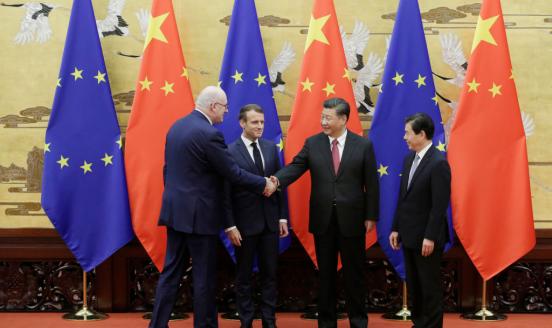The EU-China investment deal may be anachronic in a bifurcating world
Ultimately, only time will tell if this landmark trade agreement will be productive and counter the potential bifurcation of international value chain
After more than seven years and 35 rounds of negotiations, the European Union finally reached a deal with China on the Comprehensive Agreement on Investment (CAI) in December 2020.
CAI is intended to replace 25 bilateral investment agreements between EU individual member states and China by offering greater market access within specific sectors. Ultimately, the goal is to reduce uncertainty for European investors in China. CAI also introduces instruments to call for more transparency regarding subsidies and the general behaviour of Chinese state-owned enterprises (SOEs).
A major shift brought forth by CAI has been the opening of some segments of the Chinese market to European foreign direct investment. Previously, while Europe had been wide open to Chinese investment, Chinese markets had steep barriers to entry for all foreign nations. While steep barriers remain, as clearly shown in the sectoral commitments from both sides published last week, a few segments of the Chinese market are now more open to European investors. This is the case for electric vehicles and some health services but, overall, the playing field remains tilted in China’s favour.
The small, but still relevant gains on market access are not accompanied by a clear improvement on investor protection. In fact, CAI only introduces state-to-state dispute settlement, giving two more years for both parties to reach an agreement on other forms of investment protection. This means that the existing infrastructure for handling financial disputes cannot be eliminated yet, namely the existing individual investment agreements between 26 EU member states and China. Finally, while CAI includes some provisions on environment and labour rights protection, the conditions fall short of what has previously been agreed to in other investment or trade deals agreed by the EU. This makes the ratification of this deal uncertain.
The EU seems to have realised its lack of political weight compared to its economic weight in a world of increasing great power competition. By introducing the concept of strategic autonomy, lawmakers in Europe want to demonstrate that the EU can decide its place in the world without depending on its long-term ally the US. This need for sufficiency without US ties is clearly related to the EU’s deteriorating relations with the US, which began after former President Trump came to power. In fact, , the EU only began negotiations with China in November 2013 after the US’ own negotiations for a bilateral investment agreement with China. The election of Trump brought them to an abrupt end. The EU persisted, though the pace of negotiations slowed while European countries sought clarity on the Trump administration’s next steps towards the EU. When it became increasingly clear to Europeans that they would be left disappointed by Trump and his administration’s decisions and in a climate of increasing strategic competition between the US and China, Europe was put in a position it had not been since the Second World War, that of striving for strategic autonomy, in an effort to avoid being squeezed in the new era of Great Power Competition.
This strategy made sense in a world dominated by a hostile and isolationist U.S. President like Trump, but it makes even more sense today in the light of Biden’s quest to re-engage with the US’ traditional allies, while maintaining what he himself has defined as “extreme competition” with China.
The Biden administration recently announced an executive order to build a China-free tech supply chain. While the US pushes for bifurcation of supply chains, the EU is simultaneously aiming to increase its investment in a number of sectors in China. They are increasing investment in electric vehicles in particular, which will likely be covered by Biden’s executive order. In other words, the market access obtained by the EU after years of negotiations could actually trap European companies in a market which is bifurcating from Europe’s main trading partner. This is the case of electric vehicles as China, under CAI, is demanding investments of above USD $1 billion from Europe if they want to have ownership control.
Conversely, if we focus on China’s investment in Europe, a different set of problems arise. Chinese companies are indeed very keen on investing in Europe, especially in high tech sectors. A large share of Chinese acquisitions in Europe since 2018 occurred in the industrial and, to a lesser extent, the semiconductor space. Some of the deals have been stopped for national security issues and this trend is bound to increase in the foreseeable future. If anything, the EU-China investment deal might make it harder to stop certain deals, but not impossible, as public opinion in Europe becomes increasingly hostile to China’s acquisitions.
All in all, the irony of the situation is that this investment deal could have been very useful for European companies in the good old days of productive engagement as a way to improve market access to the fastest growing economy in the world. Today, in the era of US-China strategic competition, with a US administration that calls on its allies for support to contain China, European countries will find it much harder to profit from this deal. The EU is used to lengthy negotiations and this time around, has concluded a deal which could soon become anachronic in the era of economic bifurcation. Ultimately, only time will tell if this landmark trade agreement will be productive and counter the potential bifurcation of international value chains. Meanwhile, the risk of these deals is tilted towards those European companies which are particularly exposed to China as it will induce them to put more eggs in China’s basket at the risk of getting stuck in China’s value chain.




